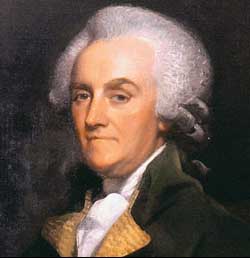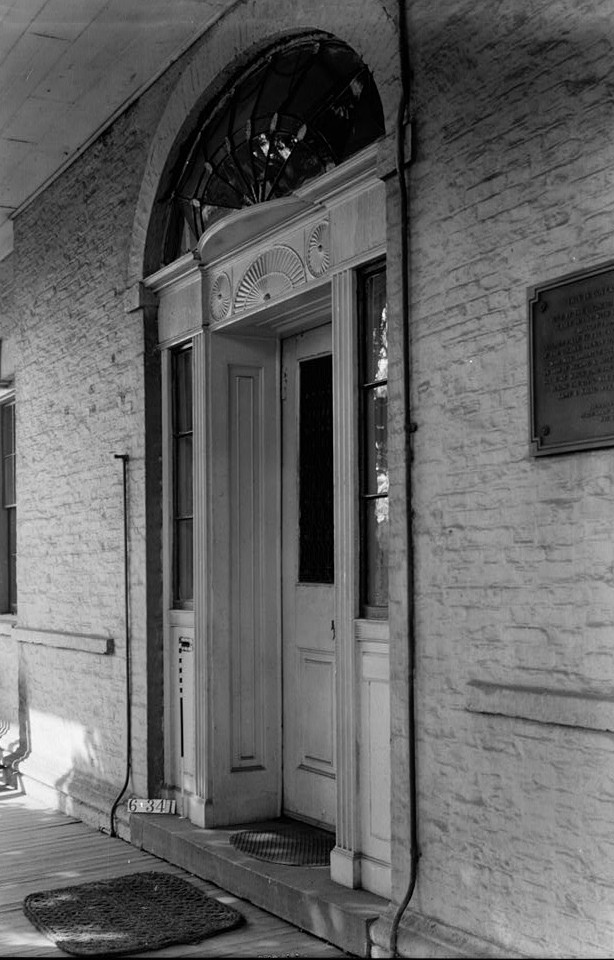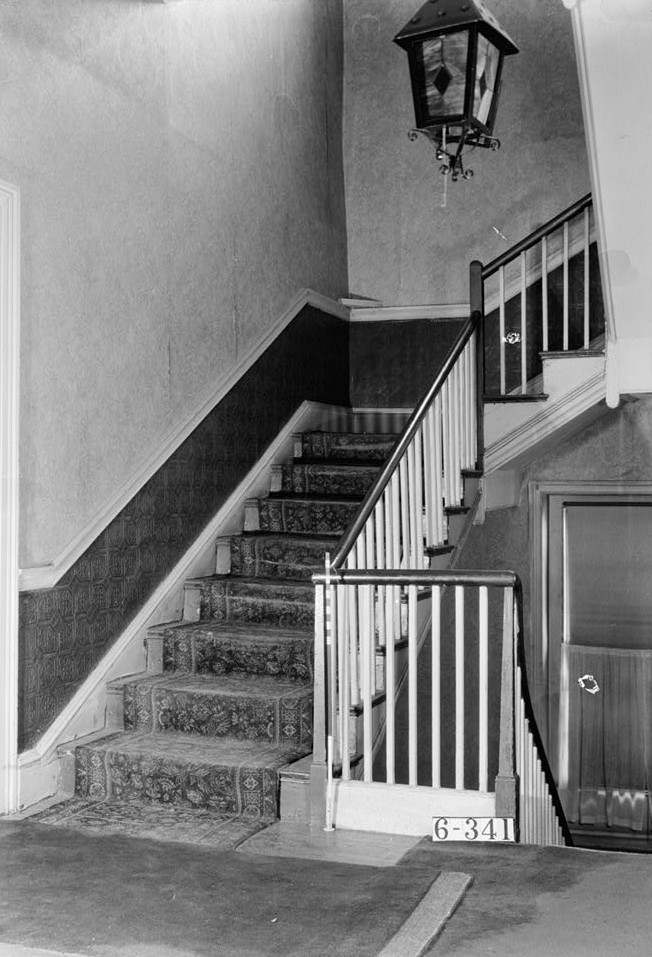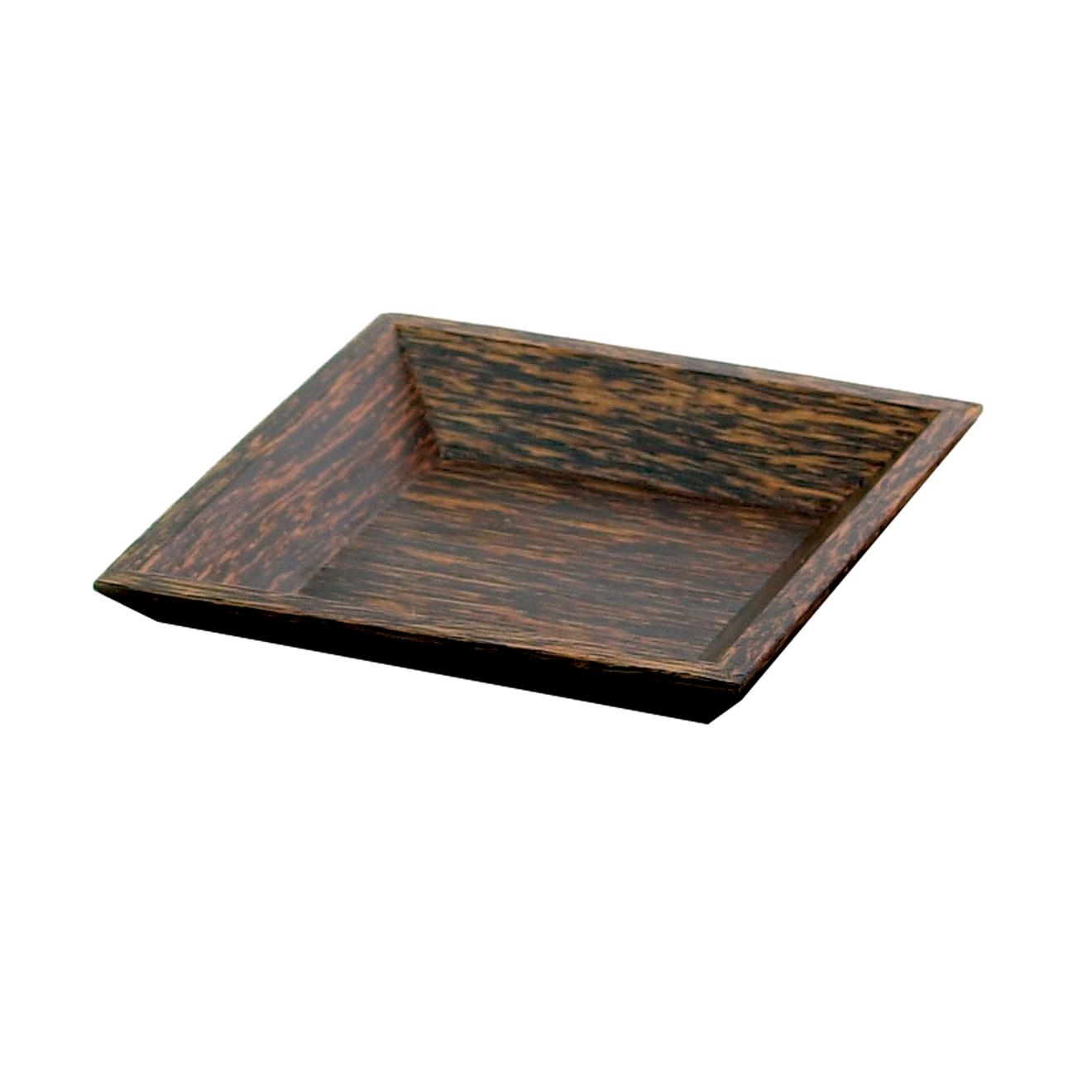*Note: Some of the language below may be a little antiquated because its excerpts and transcriptions from a the book -Transcription from Historic Houses of New Jersey By Weymer Jay Mills .J. B. Lippincott Company – written in 1902 = The original words provide a unique glimpse of the people and early times in New Jersey
The Proprietary House
Sweet Perth Town, as the early proprietors of East Jersey used to write of their capital in documents now musty, still holds on its venerable streets many old houses worthy of notice. Perhaps the most interesting to the stranger who visits this slumbering city, is the Palace erected by the Lord Proprietors for His Excellency William Frankin, captain-general and governor-in-chief of the Province of New Jersey. The house is now called The Proprietary House. This was begun in 1764, and was first occupied by this brilliant son of one of America’s greatest men, Benjamin Franklin, in 1774.
Everitt K. Taylor, Photographer September 15, 1936 Exterior – East Elevation from an old print in possession of Owner Governor’s House, 149 Kearny Avenue, Perth Amboy, Middlesex County, NJ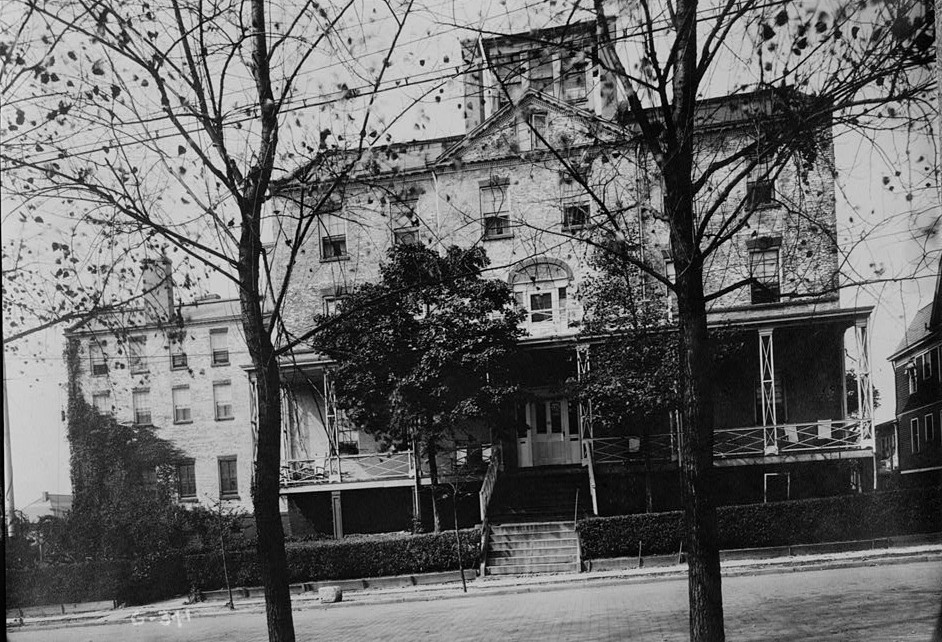
He exceeded in grandeur of entertainments
It was fitting that the last of New Jersey’s royal governors should be the most royal of all in the matter of lavish expenditure. During his brief occupancy of the Palace, before the storm of the Revolution burst on his startled ears, he exceeded all his predecessors in the grandeur of his entertainments,—the delight of the Royalist aristocracy, which left Perth Amboy in almost a body after the war.
Nathaniel R. Ewan, Photographer October 16, 1936 Exterior Front door- Governor’s House
Nathaniel R. Ewan, Photographer October 16, 1936 Governor’s House
Perth Amboy of William Franklin’s day
Gazing at this massive pile,—a true memory of the Georges,—situated on its commanding height, from which can be seen a glorious stretch of woodland and the smooth flowing waters of the Raritan entering the Arthur Kull Sound, where the notorious Captain Kidd once sailed his black-flagged galley, we are entranced by the charm of long-dead yesterdays, and our minds grow retrospective as we wander back in the years to the Perth Amboy of William Franklin’s day.
Nathaniel R. Ewan, Photographer October 16, 1936 second floor stair
Took possession of the government
In the year 1763 the young governor, then in his thirtieth year, “a handsome and witty specimen of manhood,” as one of his friends has pictured him, reached the city from New Brunswick one cold February day, escorted by the Middlesex troop of horse and some of the Perth Amboy gentry in sleighs.
The New York Gazette chronicles that he took possession of the government “in the usual form,” the ceremony being conducted ” with as much decency and good decorum as the season could possibly permit of.” It is recorded that he immediately hired one of the best houses in town, at an annual rental of sixty pounds, and there he lived some time. He is said to have mourned over the fact that Perth Amboy was so far from Philadelphia, as the long distance cut off intercourse with many of his intimates. After weighing the matter, he decided to remove to Burlington, where he resided permanently until 1774, when he came back to Amboy to live in the Palace which the generous proprietors had built for him.
Nathaniel R. Ewan, Photographer October 16, 1936 Enrance Arch detail
Blue-bloods were not cordial
During Governor Franklin’s first residence in the city there are traditions that many of the most blue-blooded of the gentry were anything but cordial to him, there having been much ill feeling over his appointment. It is said that he was openly flouted in public and at the assemblies, and the tale of his illegitimate birth was often whispered behind his back. But when he arrived at the governor’s Palace, almost ten years later, everything was changed.
Everywhere he was greeted with open arms and friendly demonstrations, for the Tory city felt secure in having a ruler who was so loyal in his allegiance to his king, and their attentions to the governor made those last months of British supremacy in America among the most brilliant in the social history of old Amboy.
Days of pomp and ceremony
Those were the days of pomp and elegant ceremony. A few years ago in the attics of many old residences there were great silk-lined chests and iron-clamped trunks of uncertain age, garnished with grotesque cupids, roses, and what-nots, since gone to antique-hunters, whose moth-eaten contents of eighteenth-century finery could have told us many an interesting tale if they were gifted with the power of speech.
What antiquarian would not have enjoyed hearing of the sylvan revels at “Love Grove,” that portion of Amboy Point which the proprietors described as being “covered with grass growing luxuriantly, the forest trees as distributed in groups, diversifying the landscape with light and shade, and all nature wearing the fresh aspect of a new creation.”
There the picturesque governor and his court, dressed like a group of old Dresden figures, would come to watch the frolics of the populace, while the wind chanted low songs among the great tree-tops, and twilight softly stained the water. Then the theatrical performances in the town hall or on the lawn of the Palace, the dances and card parties; with slow-moving minuets and many formalities. 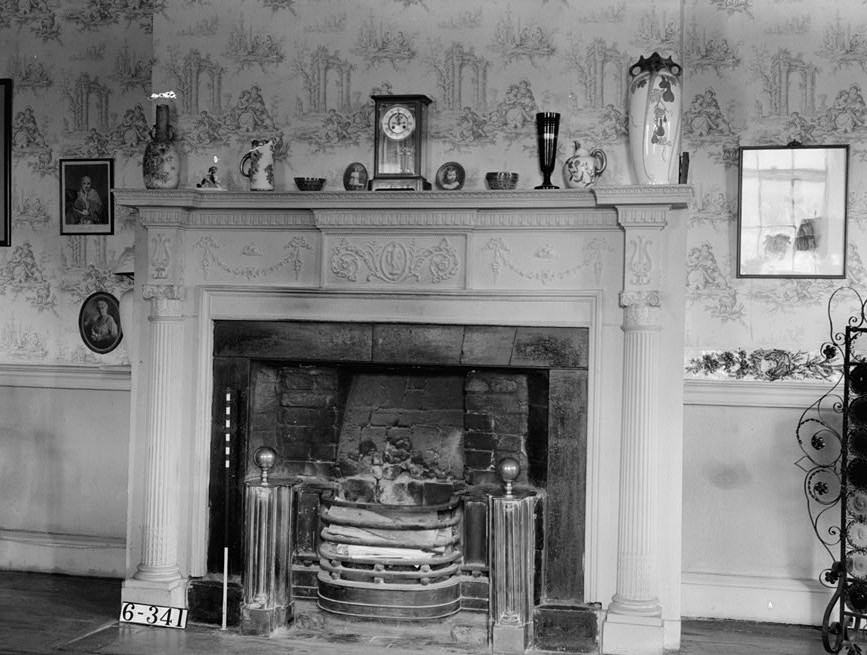
Benjamin Franklin tried to persuade his son to withdraw from royalists
Almost uncanny the brocade and silken gowns feel if lifted from their tombs of must, flavored with forgotten India scents and long dead flowers. Each could tell us a story no doubt. One may have seen the fair dame old mother gossip says tried to steal the heart of the governor away from his good lady.
Another may have been present at one of the dinner-parties at the Palace to which the guests were bidden on little slips of paper* three inches long and four inches wide. And still another may have been worn solely to charm the governor’s blue eyes, which looked ever kindly on the fair sex. But it seems almost a sacrilege to dream over them. The hands that put them together have been folded these hundred years, and the ones that wore them are not even memories.
To the Palace, shortly after his return from abroad, in 1775, Benjamin Franklin, then the great statesman and scientist, journeyed to persuade his son to withdraw from the royal cause. Though we do not approve of the son’s course, we cannot help admiring the fidelity shown under the battery of such a master of eloquence, for he declared he would rise or fall by the British government in America.
His father threatened, stormed, and expostulated with him to no purpose; and failing to convince him of the impropriety of his conduct, left him a saddened man. He grieved continually over his failure to show his son the error of his ways, and later wrote in a letter to a friend the saddest words a father could pen,—” I am deserted by my only son.”
Nathaniel R. Ewan, Photographer October 16, 1936 1st floor bedroom mantel detail
Placed under arrest
In the first days of the following year a letter written by the governor to the Earl of Dartmouth, declaring that he could not speak confidentially to his subordinates on government affairs, was intercepted by Lord Stirling, and led to the adoption of measures by that officer to prevent his chief’s escape, although history gives no evidence of his having formed such an intention.
He was virtually placed under arrest, but through the solicitation of the chief justice of the Province was persuaded to give his parole, and for some months continued to occupy the Palace in Perth Amboy and exercise nominally the duties of his station.
Governor was made a prisoner
Later, having received advices from the mother-country which he thought warranted the immediate attention of the assembly, he issued a proclamation convening that body, which greatly excited Congress, and led to the seizure of his person shortly afterwards. Tradition asserts that he was made a prisoner in one of the upper-story rooms of his Palace by a detachment of militia commanded by Major Deale, who had him led off to Burlington, “tearing him from wife and family,” as he wrote in a highly indignant letter to the assembly, in which he also “thanked God for spirit enough to face the danger.”
When the governor’s coach and guard had disappeared down the road, Mrs. Franklin started her women to packing the contents of the great rooms; and later, when the British were in possession of New York, most of her effects were safely shipped to that place.
After the poor lady and her servants had left Perth Amboy, where she had spent the first and last years of her married life, the Palace became the head-quarters for any British general happening to be in the vicinity. On its wide lawns, where the governor had given his garden-parties to the aristocracy, detachments of regiments, graceful grenadiers, stalwart Hessians, and Highlanders in native costume constantly paraded.
Franklin house Nathaniel R. Ewan, Photographer October 16, 1936 southeast bedroom – mantel detail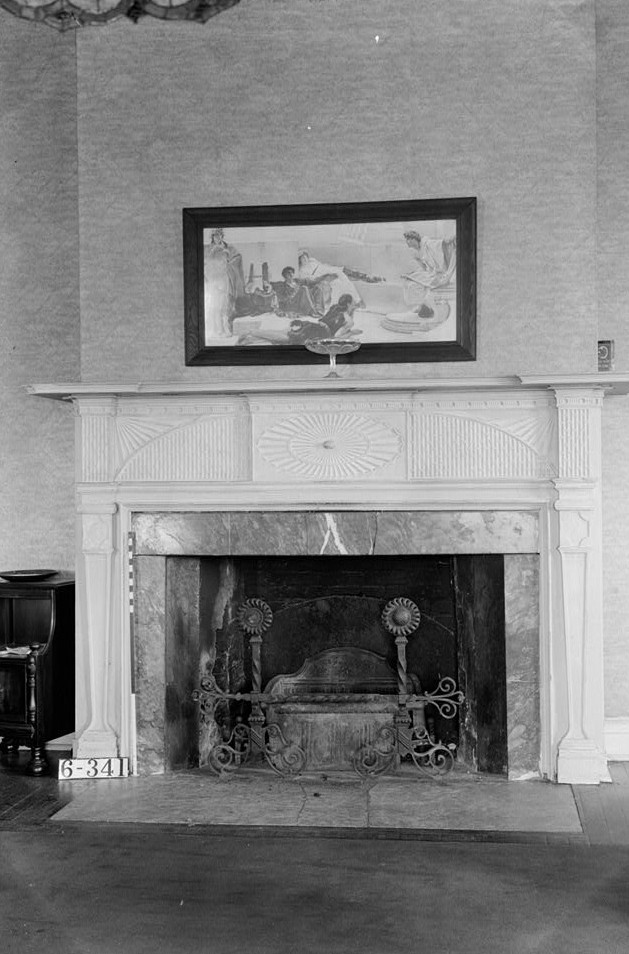
Interior of house was destroyed by fire
Shortly after the war its interior was destroyed by fire, and it was sold to John Rattoone, who restored and enlarged it. Early in the new century it was purchased by a syndicate, which added a wing to the south side of the building and established a hotel under the name of the Brighton House.
For a few years it was much frequented by the wealth and fashion of the country, but it lost its popularity at the beginning of the War of 1812. Joseph Bonaparte at one time cast a favorable eye on it for his American home, and spent several days at Commodore Lewis’s negotiating for its purchase, where he left a substantial present in the shape of a crown and necklace of pearls and topazes for the family’s kindness.
Matthias Bruen’s ghost haunts the house
He could not secure the house and lands of the Paterson family, then owned by Andrew Bell,* which shut off his view of the river, and he is said to have left Perth Amboy for Trenton in one of his Gallic rages over what he deemed Mr. Bell’s unkindness in refusing to part with his home and lands.
In later years the house and large estates came into the possession of Matthias Bruen, whose ghost, according to the tale of one of his superstitious descendants, used to haunt the great Palace made famous by so much good company.
Promptly at twelve o’clock the rumbling wheels of a coach would be heard coming up the driveway, the sycamore-trees would sway and moan, the dogs would bay, the doors throughout each floor would creak, and the heavy hall one fly open to welcome its ghostly master. This phantom gentleman in life is said never to have carried a penny on his person, and always made payment in checks, even when purchasing a ” bunch of bass or pickerel” from the fish-venders of old Amboy.
House inherited by Dr. Alexander M. Bruen
It was inherited by Dr. Alexander M. Bruen, who gave it to the Board of Relief of the Presbyterian Church in 1883. For fifty years it is to be the home of disabled Presbyterian clergymen and their families, and after that can be disposed of by the board. Although it has lost much of its grand appearance, it is still a palace, and to the travelled lovers of old Perth Town one of the most interesting in the world.
* Until Governor Franklin’s arrival it was occupied by Chief Justice Smyth.
* One of Governor Franklin’s dinner invitations is in the possession of the New Jersey Historical Society, at Newark. It is thought to be a Burlington invitation. It reads:
“The Governor and Mrs. Franklin present their compliments to Mrs. and Miss Campbell, and Desire the Pleasure of their Company to Dinner To-morrow, Friday morning.”
* Mrs. Andrew Bell is remembered by several of the long residents of Perth Amboy. In the latter part of her life she became an invalid, and rarely left her curtained bed, which stood in one of the lower rooms of the present beautiful Paterson mansion. Every child in Perth Amboy of her day knew her “white almond jar,” which her black maid was always commanded to get out to regale her little visitors.
The video below, though completed by a student, provides a credible tour of some of the rooms in the house.
SOURCE
- Transcription from Historic Houses of New Jersey By Weymer Jay Mills .J. B. Lippincott Company, 1902
- Library of Congress
